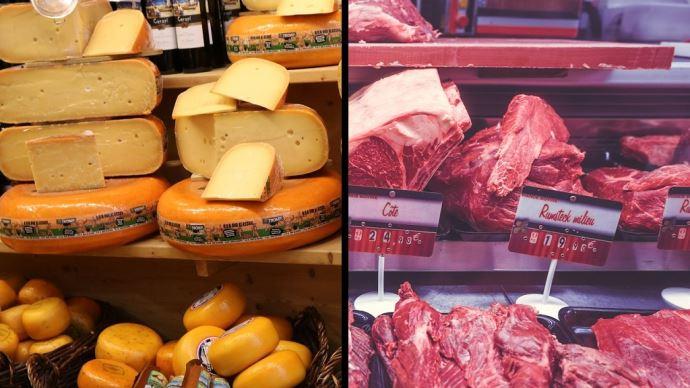Milk and meatEncouraging outlook for the second half
European milk collection increased by 1.7% in 2020 compared to 2019, despite the reduction in the European herd. The production of the major traditional producers has changed little, while Ireland, Italy and Spain are taking advantage of the end of milk quotas to increase their collection. Despite the high cost of inputs and a rather unattractive milk price, Spain is in the process of reconquering its domestic market thanks to the establishment of large dairy workshops. Italy, for its part, can count on the growing demand for Italian cheeses for export.
The successive confinements have undermined the beef cattle sector, with home consumption not having made it possible to compensate for the volumes processed by out-of-home catering. "French consumption of beef decreased by 3% in 2020 compared to 2019", explains Caroline Monniot, project manager for the cattle meat situation during a webinar organized by the Livestock Institute. This trend is even stronger in the countries of southern Europe, which rely on tourism to sell part of their goods, and traditionally consume beef outside the home.
Milk consumption less impacted than meat during confinement
“While the covid crisis led to a drop in the price of milk in the spring of 2020, European consumption increased compared to 2019”, underlines Gérard You, dairy economics project manager at idele. Households consumed the volumes traditionally reserved for out-of-home catering. The increase in European production was mainly absorbed by the strengthening of domestic demand, and the reduction in powder stocks which had remained high since the dairy crisis of 2016.

The decrease in beef consumption in Europe had a direct effect on imports from third countries, which fell by 20% compared to 2019. Intra-European trade was also affected by the lockdowns, with imported meat generally being intended for catering. Strong Asian demand and clusters in North American slaughterhouses have enabled Europe to find an export outlet, which grew by 1% over the same period. The relocation of consumption, however, had no impact on prices for young cattle given the overload of the market.
Prices on the rise for the second half
The year 2021 was marked by a sharp decline in milk production in France and Germany due to the increase in the price of inputs. The rise in the prices of industrial dairy products, in particular butter and milk powder, gives hope of an improvement in the price of milk in the months to come. If the rise in input prices is contained, European production could increase, which would open up export prospects.
With regard to beef, the easing of the European market seems to offer positive prospects for breeders, with a 2.2% drop in the number of fattening males compared to the previous year (which represents a decrease of 112,000 heads). The O cow market, which had suffered greatly from the closure of fast food outlets, is almost 10% above its 2021 level. minced meat than butcher's cuts.








